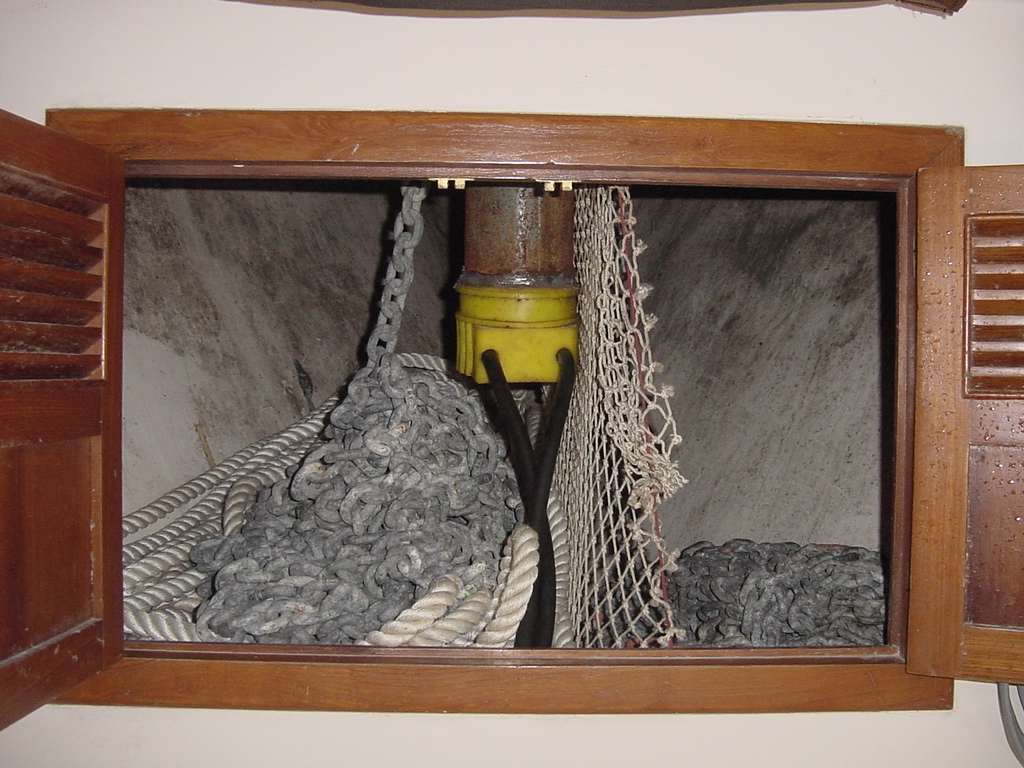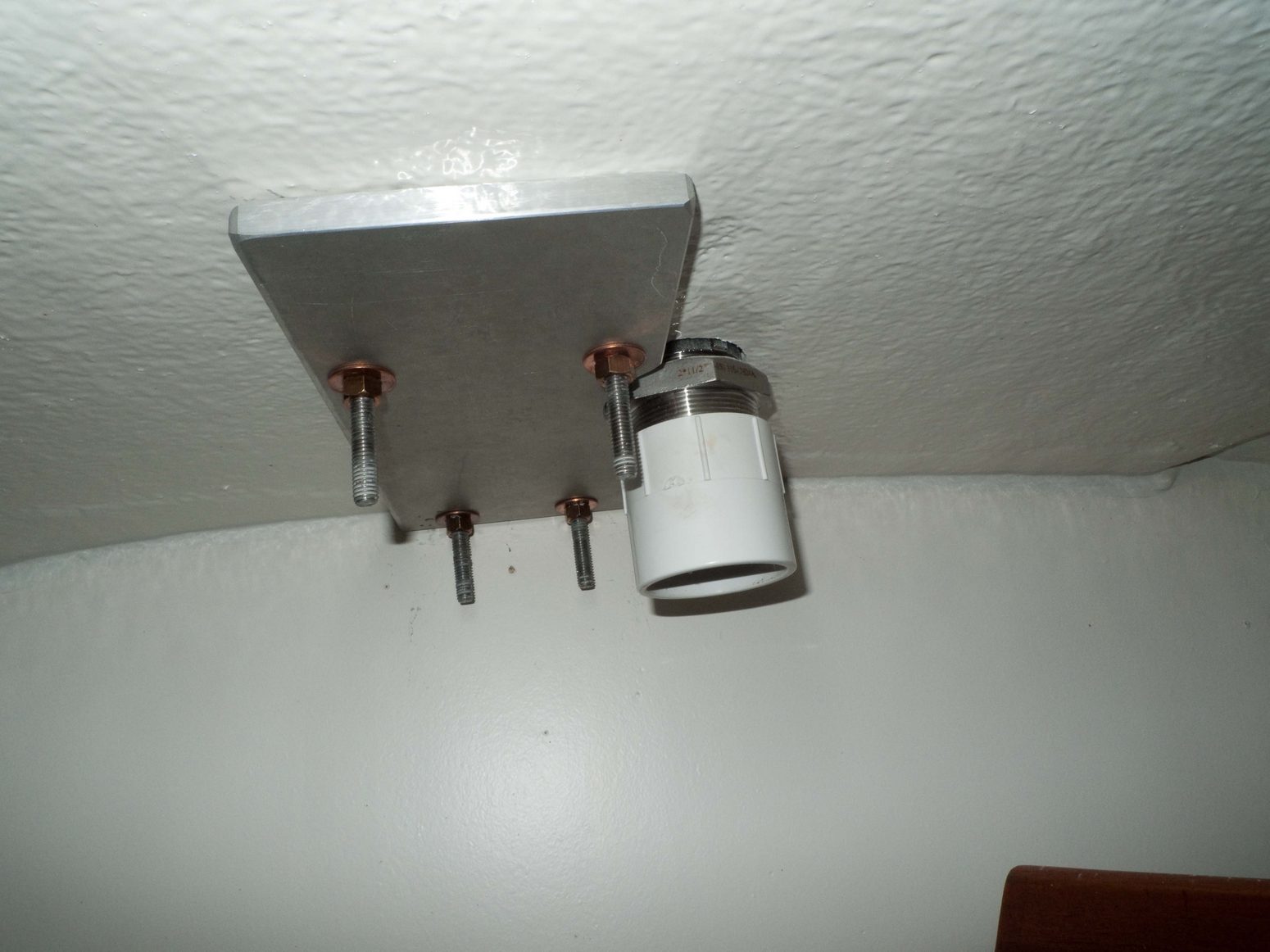The anchor windlass installation on a Fleming motoryacht is the best you'll find anywhere. This builder does everything right and there are no worries, although I was on a friend's Fleming when he lost his windlass due to a rusted solenoid switch. Maintenance is still key on every boat.
When was the last time you crawled into a fetal position to get into your chain locker to inspect your anchor windlass? Chances are, if you own a cruising boat, you have an electric windlass to deploy and retrieve your anchor and rode. While some larger boats enjoy hydraulic windlass gear, usually along with hydraulic bow thruster and active fin stabilizers, and smaller vessels may have manual windlasses, the majority of cruising boats have electric gear for anchoring. Many of these products are beautiful and robust, with massively powerful motors and gearing to pull up a heavy anchor and chain rode.
I contend that one’s anchor windlass is one of the more critical piece of equipment on a cruising boat, right up there with a sailboat’s rig and sails and a trawler’s engines. And perhaps the most ignored.
Think about it. Having an easy to use windlass is not just a luxury anymore, especially when you need to reset your anchor multiple times due to poor holding ground.
No matter the size and age of your boat, unless you have a horizontal windlass with integral motor and gearing mounted on deck, it is a good idea to get into whatever locker it is located in to get a really good look at the inner workings of your windlass. If the boat is new to you, your surveyor should have inspected it and indicated its condition, but there is no better person to be the judge of that than you, the boat owner.
Most newer boats come from the builder with electric windlasses already installed, but are you certain it is properly sized for your boat? All windlass manufacturers have charts to accurately verify if the model windlass on your boat is the right size for your vessel size and displacement.
No matter if your windlass is a horizontal or vertical, capstan-style windlass, was it installed with a beefy backing plate? This is very important, yet some boats come with just washers to secure the windlass to the deck. Big no no.
If the boat has cored decks, and most boats these days are, was the core material properly prepared for having the windlass and motor gear securely bolted to the deck? It is time-consuming work, but cutting corners here is a major cause for core saturation and expensive repairs down the road, yet it happens.
Does the chain come off the windlass easily and drop straight down into the chain locker without jamming the windlass? This was a problem on Spitfire, our PDQ 41 power catamaran, as the chain had a tendency to pile up right under the Quick windlass and jam it.
Is the wire sized appropriately for the electrical demands of the windlass? Again, manufacturer’s installation instructions should indicate the correct wiring necessary based on the maximum amperage draw of the equipment and length of cable run. A drop in voltage due to smaller than required wiring can be a problem when you need it to work in a jam and the windlass is having difficulty. Again, it is best to not assume the builder did it correctly.
If the electrical components, up to and including the motor, are installed in your chain locker, how protected are they from the typically wet conditions of a chain locker? Are the terminals, solenoids and other connections (and on-deck switches) covered and protected from corrosion? I remember seeing a boat where the windlass motor was properly installed but the wiring to the motor did not have a drip loop in its length. You could see how water could run down the wires into the motor, with the discoloring of saltwater corrosion already happening. At some point, this motor will fail.
Steve D’Antonio used to suggest that on a well-used boat, one that anchors a lot, it was a good idea to remove the electric motor every few years and have it cleaned and checked out by an electric motor shop, or even the manufacturer. If you own an older boat, you might find this a really good idea if it has never been done. Best preventative maintenance advice ever. This might be especially good advice if you embark on a Great Loop with a new-to-you boat, or head off for extended cruising on an older sail or power boat. (Most of the problems with active fin stabilizers on the Nordhavn Atlantic Crossing were due to older boats that had never before stressed the equipment that running 24/7 for weeks will do. Had these owners had their stabilizers checked by the manufacturers before leaving on the crossing, far fewer problems would have resulted. I got this directly from one of the techs at Naiad who flew to the Azores to fix several of the boats.)
One other thought that I’ve mentioned before in other posts. If you have an all-chain anchor rode, do not secure the inboard end of the anchor chain directly to the boat. Tie it to a length of nylon rope, long enough to reach onto the deck, and well secured to the hull. That way, in an emergency, you can put out all of your chain and cut it free after attach a couple of fenders to the end of the chain so you can retrieve it after the emergency is over. If you have all your chain out in a blow under strain, there is no way anyone will be able to detach it from the hull. Do it now before you ever need to find this out for yourself.
We had an Ideal windlass on Growler, our Zimmerman 36. Steve Zimmerman and Steve D’Antonio both swore by the reputation and quality of this small New England company, acquired in 2016 by Schaefer Marine. But I’ve traveled on many other boats with other brands of windlass. The big names build great gear, such as Maxwell, Lofrans, Muir, Lewmar and others. Just make sure it is the right size for your boat, was installed per manufacturer’s instructions, and continues to operate properly with regular inspection and maintenance.
There is something unnerving when you arrive at a paradise anchorage and nothing happens when you step on the deck switch...unless the skipper forgot to turn on the master disconnect switch at the helm. You do have one of those very important disconnect switches, don’t you? It's pretty important, having a way to de-energize the anchor windlass system.
Looking for images, I came across this guy's version of an anchor windlass. No idea or details, but I include it to bring you a smile to your day.













